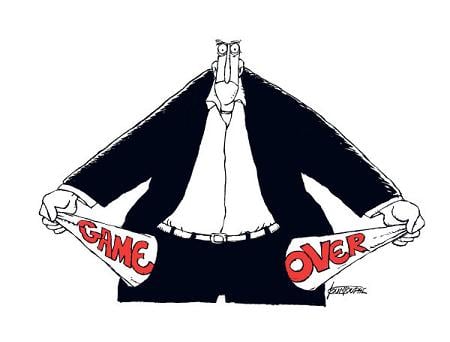By Ghassan Karam Special to Ya Libnan
Exact predictions of when the level of sovereign debt becomes a major burden on the economy of a nation state are difficult to make. What is infinitely easier to t forecast is whether the national debt that has already been accumulated is sustainable or whether an impending financial crisis is inevitable.
No one indicator by itself provides enough ground for a definitive statement regarding the future, But when a plethora of the indicators regarding the countries ability to pay, the relative size of the debt level and liquidity metrics are all simultaneously violated then that is a completely different matter. The most common indicators of debt sustainability are those that present an idea about the medium term solvency of a country and those that speak to the issue of short term liquidity. For the purposes of this short presentation the following five ratios are to be highlighted:
1. National Debt to GDP ratio
2. National Debt to Government revenue ratio
3. Debt Service to GDP ratio
4. Debt Service to Government Revenue ratio
5. Debt Service to Government annual Budget ratio
Our interest in the above topic is not purely theoretical; it is primarily driven by the alarming metrics based on the current macro economic data for Lebanon. Only one of the above figures is commonly known by the general public in Lebanon a total National Debt /GDP ratio of over 160% at the end of 2009. But very seldom are the other figures mentioned either in the print press or in general discussions of the sovereign debt issue. Did you know that the level of government indebtedness is equivalent to over 7 years of government revenue and that debt service each year accounts for more than 55% of government income. Let me repeat this, over 55% of what the government raises in revenue each year goes to service the debt and only 45% are left for all other expenditures. Another ratio that expresses the same idea is that almost 14 % of the GDP is to be allocated each year to debt service.
Allow me at this stage to share with you a few figures culled from the Lebanese Ministry of Finance. These figures have a very sad story to tell. A story that we can neglect to deal with at our own peril. The nominal Lebanese GDPO for 2009 is estimated to have been around $31.3 billion. The rather optimistic projections by the Lebanese government project a nominal GDP of $39.9 billion by the end of 2012. So what is wrong with this picture? Such a performance, if actualized is rather impressive isn’t it? Not quite. Each of the three years is also projected to carry a fiscal deficit and as we all know a deficit simply means that the government needs to borrow in order to bridge the shortfall in income. Based on the governments own estimates the deficit over these three years in question will total over $9.5 billion. Now it is rather clear, as clear as it can ever be, why is it that the Lebanese current national debt is not sustainable. Note that between the years 2009 and 2012 the GDP in nominal terms is expected to grow by $6.6 billion while the national debt meanwhile would have grown by $9.5 billions. The obvious question at this point is to ask for how long can such situation go on? Solvency is going to become a huge issue for the simple reason that the debt service on the expected $61 billion of sovereign debt by the end of 2012 will amount to $4.27 billion at an average interest rate of 7% while the GDP of $38 billion would be expected to grow at only $2.66 billion even if a nominal rate of growth of 7% is attained which is rather unlikely.
For how long is denialism to continue and when are we going to demand that the Lebanese authorities reevaluate the disastrous economic course that we are on.

Leave a Reply
You must be logged in to post a comment.